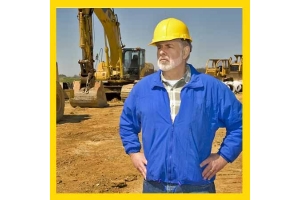Currency
January 18, 2020

Top safety leaders create a safety culture that shifts from a minimum requirement of compliance to a workforce where employees are committed to working safely. Safety leaders know that safety starts and ends with the people. It’s not about the confusing jargon, acronyms, abbreviations, and the piles and piles of paperwork. It’s about the deep trust that exists between the company and the workers.
Safety leaders agree that compliance is important. Compliance is the rules, regulations and laws that are necessary for a safe workplace. For this article I spoke to three safety to leaders to better understand how they moved from understanding and knowing the rules and regulations to being committed to operating safely always. It all comes down to trust!

Trust is the ability to be open, vulnerable and courageous based on positive expectations. It’s based on five tenets of trust:
Caring—Demonstrate genuine care of others. Employees can tell if compliance is about CYA (Cover Your Assets) rather than caring for them as individuals.
Commitment—Keeping your word or not stopping until your work or task is completed. When you are committed to a safe workplace it becomes a value that is non-negotiable and everyone lives and breathes it.
Consistency—Words and actions are aligned. The rules apply to everyone.
Competence—A skill or knowledge that aligns with the task. Everyone should be trained so they have the skills and abilities to do their job safely.
Communication—Being able to listen and verbalize for complete understanding.
Everything works together and perfect trust is possible when all of the tenets align.
It’s not surprising that the top companies are leading the shift and making a big difference in EHS. Each of the safety leaders I spoke to has a genuine concern for their people. It showed up consistently in all of the interviews. Let’s take a look at some of their insights.
Earnest (J.R.) Glascock, Jr. is director of corporate safety at The Lane Construction Corp. He spoke candidly about trust in the construction business.
“There is a big difference between compliance and culture. Every company out there has a safety culture. To build a solid culture and commitment you need to get every part of the organization involved. That is key to safety success.
“First, you have to ask yourself: Why do the employees work safe on the job? Every employee needs to take responsibility for their own individual safety. They need to know the purpose behind why they are actually working safe.
“Why they want to work safe is the difference between compliance and culture. Compliance is. ‘I have to do this.’ Culture means, ‘I want to do this.’ That to me is the key. While purpose is important, it obviously goes deeper than that.
“The second point is you have to live by the core value of ‘care for people.’ That is a core value of our company. When a company genuinely cares for employees it sets that stage for that cultural commitment that every company strives for. When employees feel that the company really cares for them, it is reciprocated. It really is a full circle.
“Companies need to ditch that ‘safety is our number one priority’ approach. It's one of those buzzwords but I would much rather hear a company talk about ‘safety always.’ What I mean by that is priorities can change. Even if it's your number one priority there is the potential that the safety priority could be pushed if you’re behind schedule. So instead of a priority it needs to be a value. Values are unwavering. They don’t change. It’s something that you live each and every day.
Safety leaders agree that compliance is important. Compliance is the rules, regulations and laws that are necessary for a safe workplace. For this article I spoke to three safety to leaders to better understand how they moved from understanding and knowing the rules and regulations to being committed to operating safely always. It all comes down to trust!

Trust is the ability to be open, vulnerable and courageous based on positive expectations. It’s based on five tenets of trust:
Caring—Demonstrate genuine care of others. Employees can tell if compliance is about CYA (Cover Your Assets) rather than caring for them as individuals.
Commitment—Keeping your word or not stopping until your work or task is completed. When you are committed to a safe workplace it becomes a value that is non-negotiable and everyone lives and breathes it.
Consistency—Words and actions are aligned. The rules apply to everyone.
Competence—A skill or knowledge that aligns with the task. Everyone should be trained so they have the skills and abilities to do their job safely.
Communication—Being able to listen and verbalize for complete understanding.
Everything works together and perfect trust is possible when all of the tenets align.
It’s not surprising that the top companies are leading the shift and making a big difference in EHS. Each of the safety leaders I spoke to has a genuine concern for their people. It showed up consistently in all of the interviews. Let’s take a look at some of their insights.
TRUST & SAFETY IN CONSTRUCTION
Earnest (J.R.) Glascock, Jr. is director of corporate safety at The Lane Construction Corp. He spoke candidly about trust in the construction business.
“There is a big difference between compliance and culture. Every company out there has a safety culture. To build a solid culture and commitment you need to get every part of the organization involved. That is key to safety success.
“First, you have to ask yourself: Why do the employees work safe on the job? Every employee needs to take responsibility for their own individual safety. They need to know the purpose behind why they are actually working safe.
“Why they want to work safe is the difference between compliance and culture. Compliance is. ‘I have to do this.’ Culture means, ‘I want to do this.’ That to me is the key. While purpose is important, it obviously goes deeper than that.
“The second point is you have to live by the core value of ‘care for people.’ That is a core value of our company. When a company genuinely cares for employees it sets that stage for that cultural commitment that every company strives for. When employees feel that the company really cares for them, it is reciprocated. It really is a full circle.
“Companies need to ditch that ‘safety is our number one priority’ approach. It's one of those buzzwords but I would much rather hear a company talk about ‘safety always.’ What I mean by that is priorities can change. Even if it's your number one priority there is the potential that the safety priority could be pushed if you’re behind schedule. So instead of a priority it needs to be a value. Values are unwavering. They don’t change. It’s something that you live each and every day.









